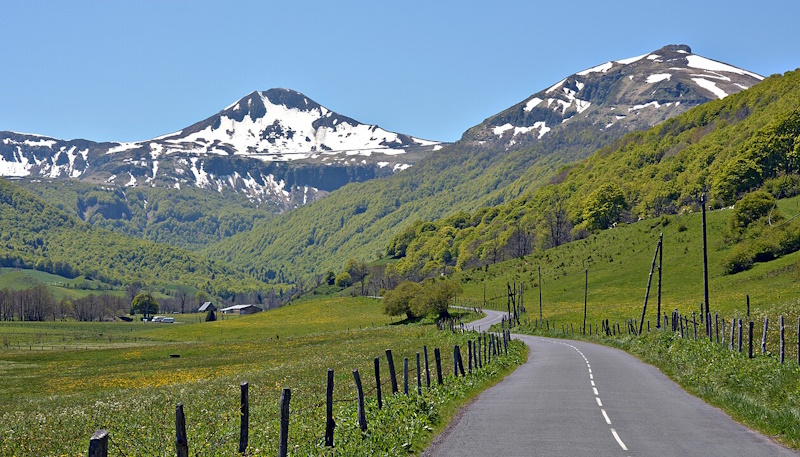8 Reasons to Visit Le Cantal, France’s Quiet Volcanic Heartland
Tucked deep in central France, Le Cantal doesn’t chase attention. It’s remote, rugged, and one of the least-visited corners of the country. But for travelers who make the detour, it offers an experience that’s raw, scenic, and completely unfiltered.
Here’s why it belongs on your radar.
1. A Land Shaped by Ancient Volcanoes
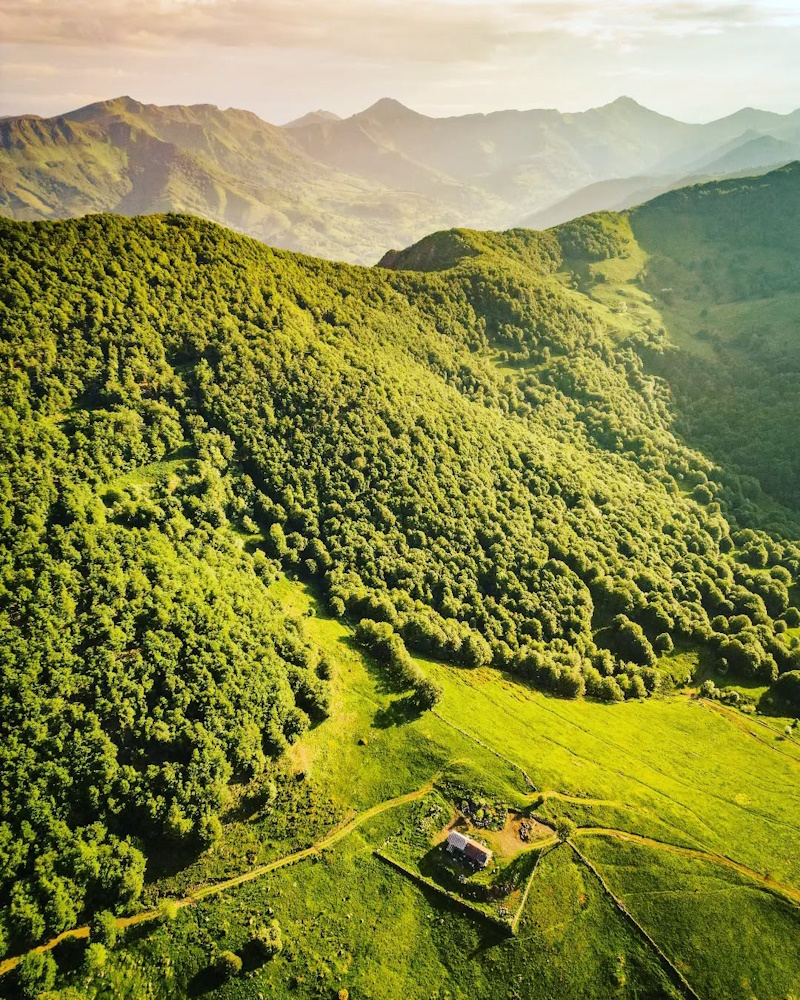
The entire region sits on the remains of one of Europe’s largest extinct volcanoes. You won’t see sharp peaks or jagged cliffs here – the mountains are older, rounder, and often carpeted in grass.
At the center is the Plomb du Cantal, which rises to 1,855 meters. You can hike to the top or take a cable car from the Le Lioran ski resort. The views sweep across valleys, plateaus, and grazing land, with barely a building in sight.
2. The Cheese Here Is a Local Institution
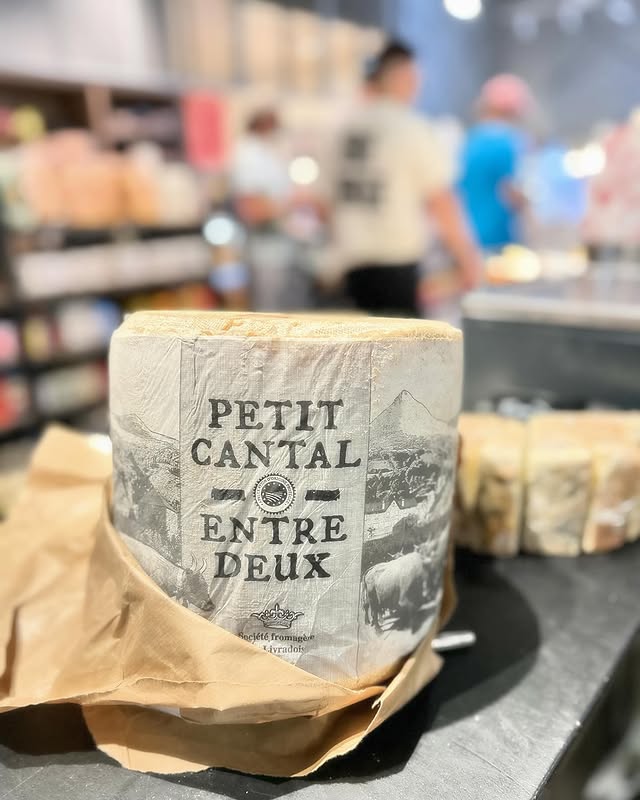
Cantal cheese has been made in these hills since at least Roman times. It’s sold across France, but eating it where it’s made is another story.
You’ll find it aged young (mild and milky), between (nutty and firm), or old (strong, crumbly, and sharp). Many farms open their doors for tastings. Others sell directly from aging caves built into the rock.
In restaurants, it melts into truffade, a rich potato-and-cheese dish served in a frying pan. Locals eat it with cured ham and a green salad.
3. You Can Base Yourself in One of France’s Most Beautiful Villages
Salers, perched at 950 meters, is a medieval hill town with lava-stone houses, defensive walls, and wooden balconies. Almost everything is built from dark volcanic stone. The village has been restored but not dressed up.
You’ll find cheese shops, butchers, and family-run auberges rather than souvenir stands. Walk the ramparts at sunset, when the mountains catch the last light. Stay overnight and you’ll have the cobbled lanes to yourself by evening.
Two of the best places to stay here are Les Remparts, with classic rooms and valley views, and La Bastide du Cantal, a little outside town, with a more countryside feel.
4. There’s Still Real Quiet in the Countryside
Much of Cantal is farmland and pasture. Small stone villages sit miles apart. You’ll pass more cows than people, and phone signal is unreliable in the mountains.
This isn’t an area built for tourists. It’s for people who like long drives, picnics in the grass, and open skies with no planes overhead.
Towns like Marcolès, Tournemire, and Montsalvy have one café, one church, and not much else (and that’s the appeal).
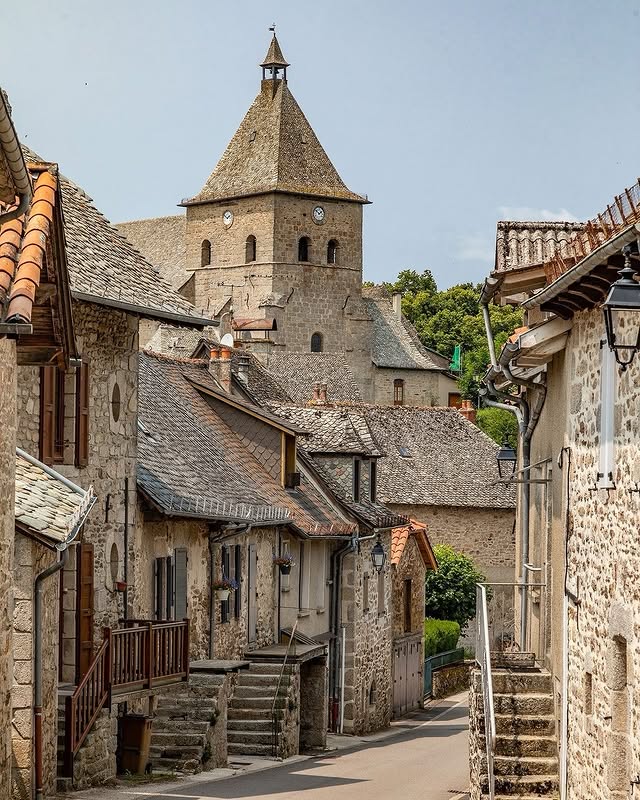
For even more remote stays, try Les Maisons de Montagnes in Pailherols, part inn, part restaurant, with hearty meals and views over rolling land.
5. Hiking Trails Without the Crowds
The Parc des Volcans d’Auvergne covers a wide stretch of Cantal’s highlands, with marked trails that cross ridges, forests, and alpine meadows.
Routes from Prat-de-Bouc, Col de Serre, or Super Lioran offer half-day to full-day hikes with views in all directions.
There are no entry fees, no lines, and no commercialization. Just old trails, wind in the grass, and the sound of cowbells in the valley.
If you want a base close to the mountains, Vic-sur-Cère or Thiézac work well. Both are small but have inns and hotels like Hôtel Beauséjour (3*) and Hôtel et Résidence des Bains (3*), with easy access to trailheads and a few decent cafés.
6. Hearty Food That Reflects the Terrain
The cuisine is rural and filling. Aligot is a blend of mashed potatoes and tomme cheese, stirred until it stretches. Pounti is a baked loaf with chard, pork, and prunes, served warm or cold.
In the cold months, locals eat the potée auvergnate, a boiled dish with cabbage, sausage, and salted meat.
Le Bailliage in Salers serves refined versions of these dishes in a traditional setting. Les Quatre Saisons serves traditional dishes in a warm, rustic setting. Good for truffade, pounti, and meat dishes from the region.
Many places offer generous menus at under €25, with cheese included by default.
7. Strongholds, Towers, and Towns on Cliffs
History here is less polished but often more atmospheric. Château d’Anjony near Tournemire looks like a movie-set castle, with a square keep and round towers.
Château du Sailhant, near Saint-Flour, rises from a cliff above a gorge and waterfall. Its setting feels completely isolated, with steep basalt walls and a restored interior that mixes medieval and Renaissance details.
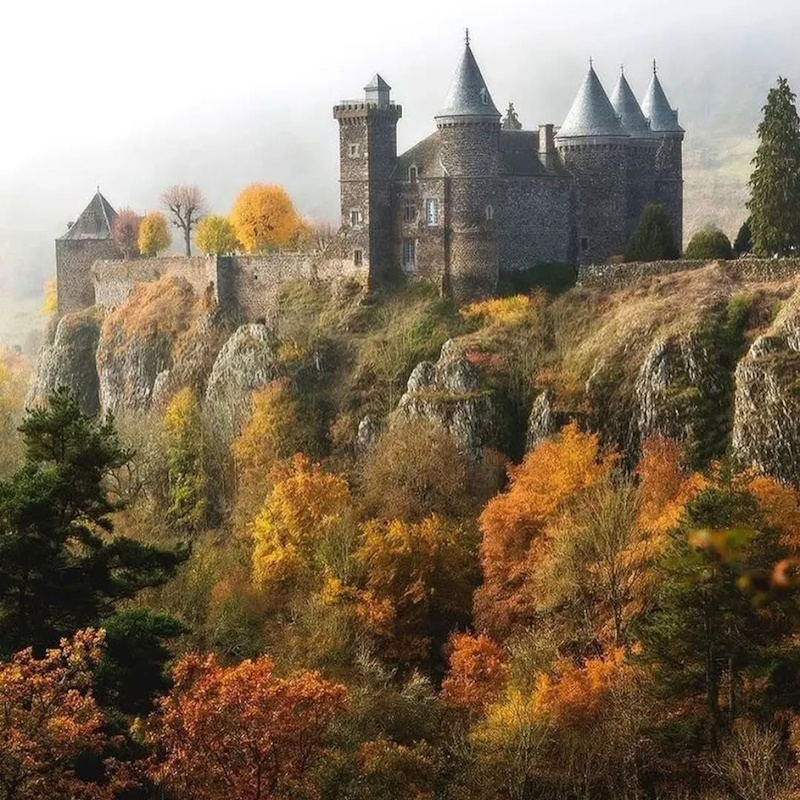
Saint-Flour itself sits on a volcanic bluff, its cathedral looming above the valley. Nearby, the Garabit Viaduct, built by Gustave Eiffel, spans the Truyère gorge in red iron.
These aren’t heavily promoted sites, so you often visit alone, without the feeling of being managed.
Aurillac, the largest town, makes a good stop if you need a break from driving or want a more practical overnight. Le Renaissance or Le Saint-Jacques offer basic but central accommodation near shops and restaurants.
8. A Region That Still Feels Undiscovered
Le Cantal doesn’t feature in most France itineraries. That’s partly due to location, no major highways or fast trains pass through it. But for those with a car and some time, that’s the reward.
Hotels are small, family-run, and inexpensive. Villages don’t advertise themselves. The pace is slow, and people live here the way they always have.
It’s one of the few regions where you can still travel without following anyone else’s path.
If You Go
Base yourself in Salers for atmosphere, or Vic-sur-Cère, Thiézac, or Murat for easier access to the mountains. If you’re relying on trains, Aurillac is the most practical hub, though a car is still essential.
A 2–3 day trip is enough to take in a couple of towns, hike the Plomb du Cantal, drive the mountain roads, and eat well along the way. You won’t find big-name sights or crowds here – but that’s the whole point.

